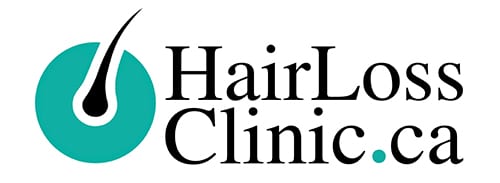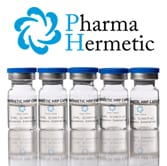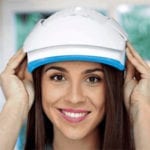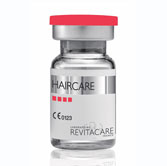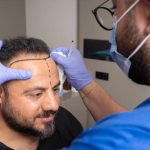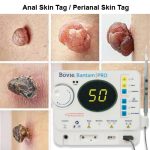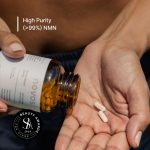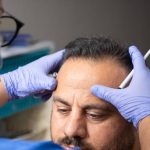
TRACTION ALOPECIA | CAUSE & TREATMENT | HAIR LOSS CLINIC TORONTO
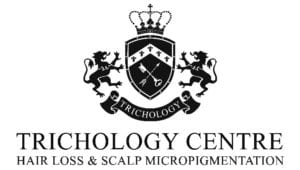
FREE ONLINE HAIR LOSS ASSESSMENT FORM
Are you experiencing any hair loss or scalp issues? Get a Certified Trichologist to assess and help treat your condition in Toronto and Greater Toronto Area. Please complete our online Trichology Assessment Form to get started now.
What is Traction Alopecia?
Traction alopecia is a form of alopecia caused primarily by the pulling force being applied to the hair. This pulling force is usually associated with certain hairstyles and using hairstyling methods that cause damage to the hair.
Traction alopecia is usually reversable, however continued long term hairstyles and hair styling methods that damage the hair follicles and hair can cause permanent hair loss if those are not corrected.
Hair loss in traction alopecia occurs due to physical factors and is different from other hair loss conditions such as alopecia areata, alopecia totalis or cicatricial alopecia that mainly occur due to immunological or genetics factors.
Traction Alopecia can affect both adults and children. Certain ethnic groups especially of African descent are more prone to developing traction alopecia due to the tradition of putting hair into tight braids or dreadlocks. A study in the British Journal of Dermatology found traction alopecia in 31.7 percent of African women with relaxed or permed hair.
The prevalence of traction alopecia increases with age as the hair follicles get weaker and more prone to damage.
Hair loss that occurs in traction alopecia can be both the scarring (cicatricial) and non-scarring alopecia depending on whether it is detected early and reversed or its advanced and scarring has already occurred.
What’s the Difference between Acute and Chronic Traction Alopecia, Reversible and Irreversible Traction Alopecia?
Acute traction alopecia is caused after a traumatic injury of the scalp. A trauma such as a motor vehicle accident that causes trauma to the hair and hair follicles can cause acute traction alopecia. Chronic alopecia (commonly called traction alopecia) is the gradual hair loss due to the long term and constant tension or chemicals being applied to the hair eventually causing damage to the hair follicles and permanent alopecia.
Traction alopecia is also classified as reversible and irreversible traction alopecia. With reversible traction alopecia hair regrowth is possible if the condition is treated early enough and there is no damage to the hair follicles. With this condition, few hair follicles have been affected. The affected hair follicles remain in anagen phase for a short time and convert quickly to catagen or telogen phase. In advanced stages of traction alopecia, if scarring has occurred to the hair follicles in the affected areas, then it becomes irreversible alopecia as no hair regrowth is possible due to the hair follicles being destroyed and replaced with scar tissue.
What Can Cause Traction Alopecia?
Any hairstyle or hair styling methods that causes tension or damage your hair can cause traction alopecia. This includes ponytails, dreadlocks or braids, pigtails, hair extensions (extensions glued to base of hair), tight head wear (sports helmets), hair accessories worn tightly, hair straighteners, hair relaxers, rollers, hot combs, and other chemical treatments. Certain cultures, like Sikhs who twist hair under turbans, sports players who wear tight caps, and ballerina dancers who put hair into tight buns, have higher incidences of traction alopecia.
What are the Characteristics of Traction Alopecia?
Characteristic of traction alopecia is a receding hairline typically around the forehead, temples, or nape. However, other sites of the scalp can be affected as well. Prolonged inflammation and constant tension causes loosening of the hair from the follicles and damages them, creating hair loss and scarring of the hair follicles.
Traction alopecia also causes redness, itching and ulcers on the scalp. In the areas where the hair has been under strain, patches of thin or broken hair can be seen. Small red bumps or pimples may appear on the scalp or at the base of braids. Widening of hair parting can also be observed.
What Treatment is available for Traction Alopecia
The best treatment for traction alopecia is prevention. If you suspect you have traction alopecia, you should immediately change the current hairstyle or hair styling methods that is causing the problem. Change to a looser hair style with no tension to the hair. Avoid tight buns or ponytails, stop using chemicals, hot combs or straighteners that is causing the condition. Stop wearing tight caps or helmets by getting a larger size. Once the tension and/or chemicals on the hair is removed, it normally takes 6 to 9 months or in more severe causes up to a year for the condition to resolve and have hair start growing back. If scarring has occurred where the hair follicles have been destroyed in the affected areas, then hair will not grow back in those areas.
There are available treatments to stimulate hair regrowth and speed up the healing process.
Nonprescription Treatments for Traction Alopecia
Micronutrients
Q & A
What is the most common cause of traction alopecia?
The most common cause of traction alopecia is repetitive tension or pulling on the hair follicles. This can occur due to tight hairstyles, such as ponytails, braids, or buns, that exert constant pressure on the scalp.
Are there any support groups or helpful resources for individuals with traction alopecia?
Yes, there are support groups and online communities where individuals with traction alopecia can connect, share experiences, and find support. Additionally, resources such as reputable websites, books, and educational materials can provide valuable information on managing traction alopecia.
Can certain hair care practices lead to cicatricial alopecia?
Cicatricial alopecia refers to a group of hair loss conditions characterized by permanent damage to the hair follicles. While certain hair care practices, such as excessive heat or harsh chemicals, can contribute to hair damage, the exact cause of cicatricial alopecia is multifactorial and may involve autoimmune factors.
Have there been any clinical studies conducted on traction alopecia?
Yes, there have been clinical studies conducted on traction alopecia to understand better its causes, risk factors, and treatment options. These studies provide valuable insights into the condition and contribute to advancements in managing and preventing traction alopecia.
How can patients cope with the psychological impact of traction alopecia?
Coping with the psychological impact of traction alopecia can be challenging. Seeking support from loved ones, joining support groups, and consulting with mental health professionals can provide emotional support and coping strategies to manage the psychological effects of hair loss.
Can different hair types have different risks for developing traction alopecia?
Different hair types can have varying risks for developing traction alopecia. Hair types naturally more fragile or prone to breakage, such as Afro-textured hair, may be more susceptible to hair follicle damage caused by tension.
Should I consult a doctor to diagnose and treat traction alopecia?
It is recommended to seek professional advice from a dermatologist or trichologist for an accurate diagnosis and suitable treatment plan for traction alopecia. These healthcare professionals have the expertise to assess your condition and recommend suitable interventions.
Can certain ethnic backgrounds be more susceptible to traction alopecia?
While traction alopecia can affect individuals of any ethnic background, certain hair styling practices that tension the hair follicles, such as tight braids or ponytails, may be more prevalent in specific ethnic groups. Therefore, the risk of traction alopecia can vary among different ethnic backgrounds.
Can topical steroids be effective in treating traction alopecia?
Topical steroid treatment can effectively manage inflammation associated with traction alopecia and promote hair regrowth. These medications help reduce scalp irritation and encourage the healing of damaged hair follicles.
What are the potential risks of topical steroids for traction alopecia?
While topical steroids can be beneficial in treating traction alopecia, long-term and excessive use of these medications can have side effects, such as skin thinning, discoloration, or increased hair growth in unintended areas. It is important to use them under the guidance of a healthcare professional.
Can military personnel be more susceptible to traction alopecia due to specific grooming requirements?
Military personnel required to wear tightly pulled hairstyles or helmets for extended periods may be at a higher risk of developing traction alopecia. The consistent tension and pressure on the hair follicles can contribute to their development.
Diet and nutrition
The role of diet and nutrition to help treat traction areata is growing. New evidenced-based recommendations that micronutrients including certain vitamins and minerals have shown positive results. Micronutrients can reduce oxidative stress, an increasingly suspected contributor to hair loss. Vitamin D have shown to help modify the immune response by inhibiting Th1 cell proliferation. Current literature has consistently demonstrated lower vitamin D levels in patients with certain hair loss conditions.
Vitamin D – Vitamin D boosts immunity, keeps bones strong and skin healthy, stimulates cell growth, and helps create new hair follicles. Vitamin D deficiency has been linked to alopecia areata.
Zinc – Zinc is an essential mineral upon which hundreds of enzymes depend for their catalytic activity.
Iron or ferritin – Iron deficiency remains the most common nutritional deficiency in the world, a sign of which includes chronic diffuse telogen hair loss.
Vitamin C – Vitamin C is a powerful antioxidant that helps protect against the oxidative stress caused by free radicals. It also helps your body absorb iron, a mineral necessary for hair growth.
Vitamin E – Like vitamin C, vitamin E is an antioxidant that can prevent oxidative stress. In one documented study, people with hair loss experienced a 34.5% increase in hair growth after supplementing with vitamin E for 8 months.
Magnesium – Magnesium acts as a co-factor for over 300 enzyme systems, and plays an important role in nucleotide synthesis, a frequent process in the rapidly dividing hair follicle.
Selenium – Selenium also contributes to antioxidant defense mechanisms via its interaction with the enzyme glutathione peroxidase.
Biotin – Biotin is an important coenzyme for carboxylation reactions. Biotin deficiency has been shown to cause hair loss.
Vitamin A or retinoid or retinol – Vitamin A is an essential vitamin for hair follicles. It also helps skin glands make sebum. Sebum moisturizes the scalp and helps keep hair healthy.
Vitamin B12 or cobalamin – B12 contribute to nucleic acid production and thus possess an important role in the health of the hair follicles.
Folic acid or folate – Folic acid is primarily responsible for healthy cell growth including the cells in hair follicles.
Copper – copper acts with zinc in the antioxidant enzyme copper/zinc superoxide dismutase.
Adding certain vitamins and minerals can help promote hair growth and nurture the hair follicles and scalp. Speak with a certified Trichologist on the best dietary, vitamins and minerals to help you with traction areata.
Q & A
Treatments for Traction Alopecia
SMP Scalp Micropigmentation is a popular cosmetic solution. It can be used for traction areata if parts of your scalp have permanent hair loss. If you condition persist and hair is not growing back fully, you may consider SMP to camouflage the bald spots. SMP, commonly known as hair tattoo, the technique of placing individual pigment tattoo to replicate the appearance of real hair follicles. For more information about scalp micropigmentation, please visit Here
Mesotherapy solutions for Traction Alopecia
Mesotherapy is a technique that uses micro needling of vitamins, enzymes, hormones, and plant extracts to rejuvenate the scalp and hair follicles.
AAPE® STEM CELL THERAPY
AAPE® (Adipose-derived stem cells Protein Extracts) is a mixture of refined growth factors extracted from human adipose to promote hair growth and scalp health using outstanding ingredients approved by US FDA and CFDA. AAPE has been proven to be highly effective therapy for hair regeneration. It is a safe, non-invasive hair loss therapy. For more information about AAPE visit Here
NOURKRIN® MAN AND WOMAN HAIR LOSS
If you’re worried about certain hair loss medications that contain ingredients that may cause some side effects such as Minoxidil, we offer a hair loss treatment called Nourkrin®. Nourkrin® contains natural ingredients and has been clinically proven to help thinning hair. The key active ingredients are marine-based extracts of proteins and polysaccharides that have been combined with silica, vitamin C, and horsetail extract. Developed by scientists in Finland, Nourkrin® has been the subject of many double blind, placebo-controlled clinical studies, the latest of which showed that 77% of all participants reported a positive effect during a six-month treatment period and their hair count increased by an average of 35.7%.
PHARMA HERMETIC HAIR RECOVERY PROGRAM®
Pharma Hermetic Hair Recovery Program® works at revitalizing the hair bulb and obtaining a greater thickness and strength. It helps strengthen the anchorage of the root and re-balance the scalp.
In addition, the Hair Recovery Program® SP55, enhance the growth of new hair and activates dormant follicles thanks to its effective active ingredients. Providing all the necessary nutrients to repair the weakened and brittle hair. After the treatment, the hair becomes thicker and more voluminous.
We rely on ingredients suitable to penetrate the scalp and stop hair loss.
- Thicker hair.
- More density.
- No side effect.
- Topical application.
- Lasting results.
THERADOME® LASER HAIR THERAPY
The Theradome® brings you the world’s most advanced laser hair growth treatment to enjoy from the comfort of your own home. Unlike Light Emitting Diodes (LEDs) devices, our laser light targets the stem cells at the base of hair follicles. This allows the formation of a new photonic pathway that can restore hair to a healthy state. Theradome® one-of-a-kind laser hair helmet was engineered based on four crucial scientific criteria, which together provide the most powerful and efficacious laser hair growth treatment available. For more information about Theradome®, please visit: https://laserhairtherapy.ca.

FIND A TRICHOLOGIST IN TORONTO GTA
With the numerous available treatments for traction alopecia our Trichologist can recommend the best treatment that can help with traction alopecia. At the Trichology Centre, we have helped patients with traction alopecia, advising them the best treatments available and helping them regain their confidence and self-esteem. Early assessment and treatment from the onset of hair loss is important and can help prevent the condition to worsen.
We have two clinics in the Toronto GTA,
TRICHOLOGY CENTRE | hairlossclinic.ca | hairtattoo.ca | laserhairtherapy.ca
600 Sherbourne St #605, Toronto
8763 Bayview Ave #5, Richmond Hill.
Please give us a call at 647-492-9093
ADDRESS
Toronto, 225 Wellesley St East #5
Richmond Hill, 9140 Leslie St #301
PHONE
(647) 492-9093
hairlossclinic.ca@gmail.com
WORKING HOURS
Mon-Sat 9:00 am – 8:00 pm
Sunday CLOSED
Comments are closed.
